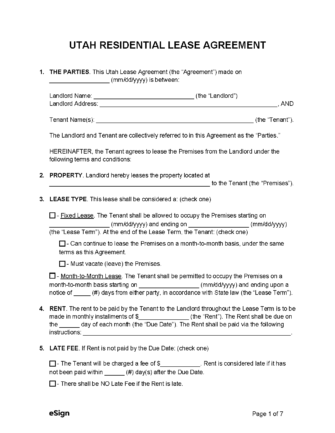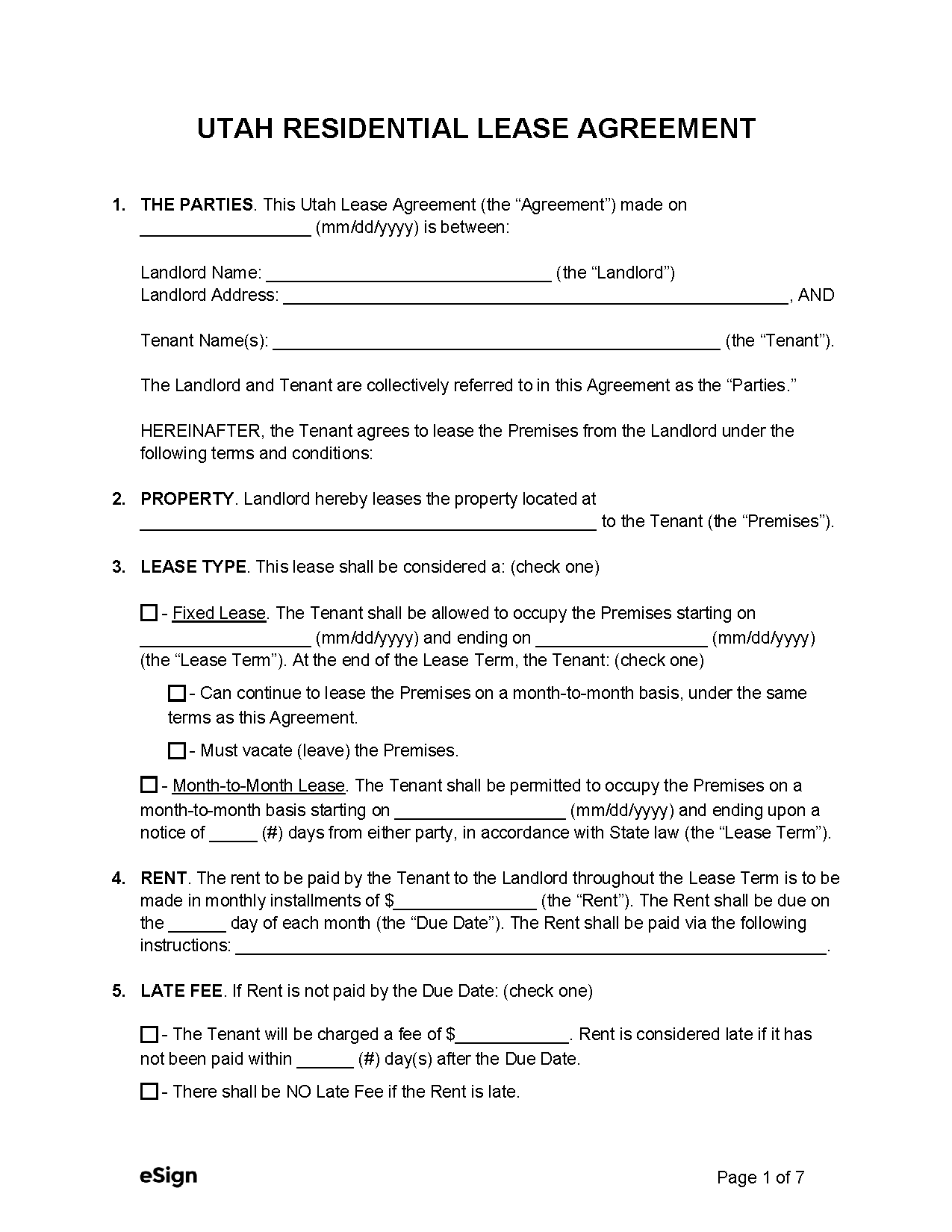Lease Agreements: By Type (6)
 Standard (1-year) Lease Agreement – A a contract that authorizes a tenant to occupy a dwelling for a fixed term of one year. Standard (1-year) Lease Agreement – A a contract that authorizes a tenant to occupy a dwelling for a fixed term of one year.
Download: PDF, Word (.docx), OpenDocument |
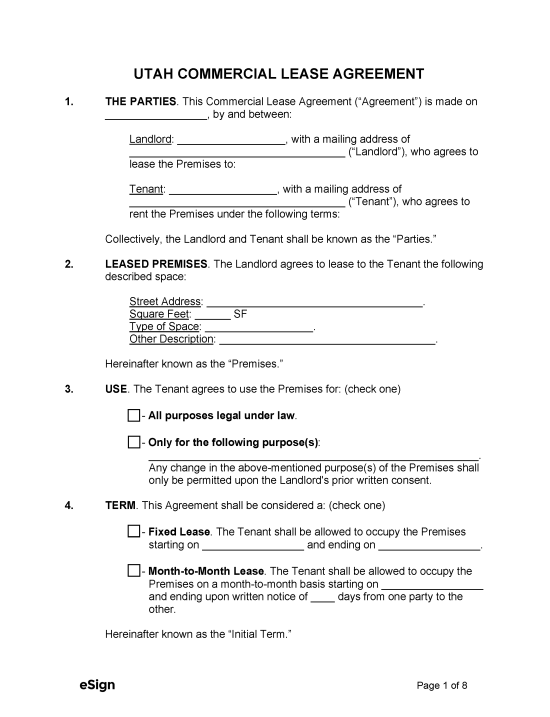 Commercial Lease Agreement – Contains the rental terms for a rental property to be used for business purposes. Commercial Lease Agreement – Contains the rental terms for a rental property to be used for business purposes.
Download: PDF, Word (.docx), OpenDocument |
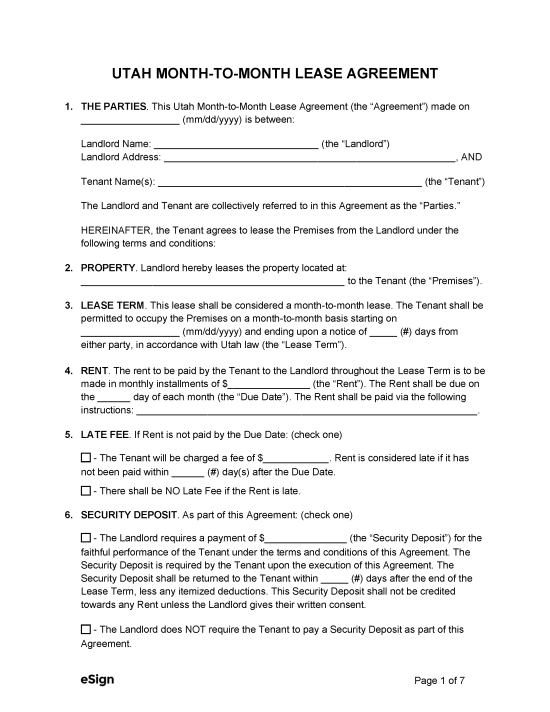 Month-to-Month Lease Agreement – This residential lease contract will renew on a monthly basis until terminated by either the landlord or tenant. Month-to-Month Lease Agreement – This residential lease contract will renew on a monthly basis until terminated by either the landlord or tenant.
Download: PDF, Word (.docx), OpenDocument |
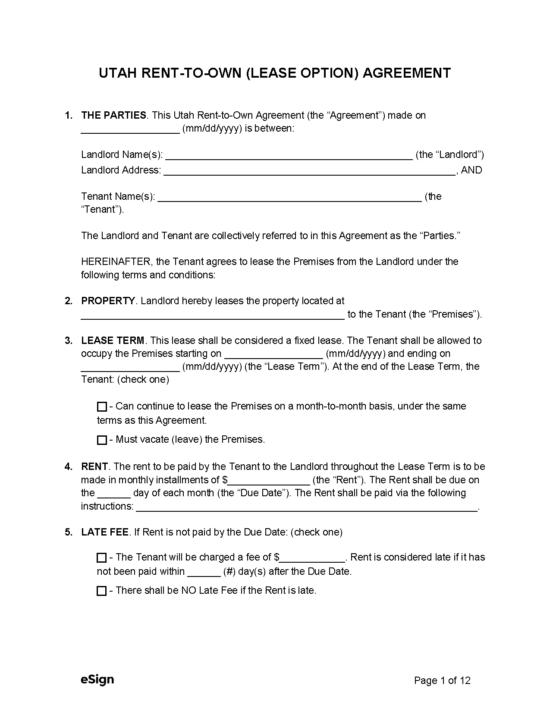 Rent-to-Own (Lease Option) – A lease that initially functions as a standard rental contract but also offers the tenant the ability to purchase the property if certain conditions are met. Rent-to-Own (Lease Option) – A lease that initially functions as a standard rental contract but also offers the tenant the ability to purchase the property if certain conditions are met.
Download: PDF, Word (.docx), OpenDocument |
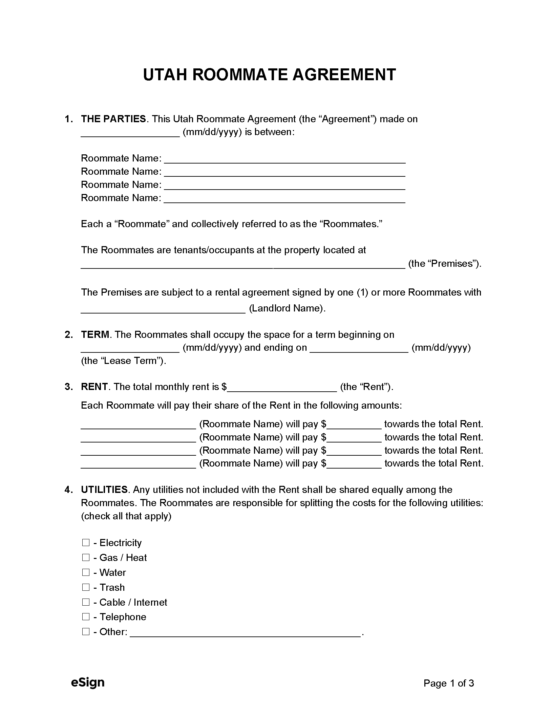 Roommate Agreement – States the rental costs and responsibilities of each tenant in a shared dwelling, as well as the household policies and living conditions. Roommate Agreement – States the rental costs and responsibilities of each tenant in a shared dwelling, as well as the household policies and living conditions.
Download: PDF, Word (.docx), OpenDocument |
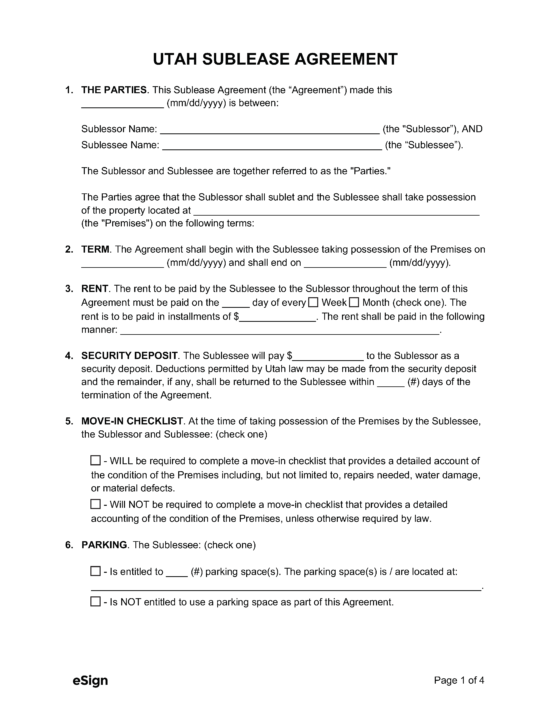 Sublease Agreement – Used by leaseholders to rent out all or part of the dwelling of their rental unit (with landlord’s permission). Sublease Agreement – Used by leaseholders to rent out all or part of the dwelling of their rental unit (with landlord’s permission).
Download: PDF, Word (.docx), OpenDocument |
Required Disclosures (4)
- Lead-Based Paint Disclosure (PDF) – Landlords must disclose the existence of lead-based paint on the property if it was constructed prior to 1978.[1]
- Methamphetamine Contamination – If an owner or lessor has actual knowledge that their property has methamphetamine contamination, this information must be disclosed in the lease.[2]
- Owner and Manager Information – Tenants must be given the names, addresses, and phone numbers of the owner or another individual/entity authorized to manage the property or act on the owner’s behalf. They must also receive a copy of any rules that apply to the rental unit.[3]
- Property Condition Report (PDF) – Prior to a tenant’s occupancy, the landlord must furnish the tenant with a written inventory of the condition of the rental unit. A blank form must be attached to the report so the tenant can list any damages at the beginning of the rental term.[4]
Security Deposits
Maximum Amount ($) – Maximum security deposit amount is not addressed in state statutes.
Collecting Interest – The collection of interest on security deposits is not covered by state law.
Returning to Tenant – The landlord has 30 days to return the security deposit to the tenant, or the appropriate balance of the deposit if used to repair damages.[5]
Itemized List Required? – No, state statutes do not mention the requirement of an itemized list of damages.
Separate Bank Account? – No, there are no laws that institute a mandate for separate bank accounts for security deposits.
Landlord’s Entry
General Access – Unless the lease states otherwise, landlords must give 24 hours’ notice before entering the premises.[6]
Immediate Access – Entering in an emergency is not mentioned in state statutes, but if the lease states a landlord can enter for emergencies without notice, the provision will most likely be deemed valid and legal.
Rent Payments
Grace Period – There is no grace period mentioned in state statutes; if the tenant fails to pay rent on the due date, the landlord can serve them a notice to pay or quit at anytime.
Maximum Late Fee ($) – The maximum late fee is 10% of the rent amount or $75, whichever is greater.[7]
Bad Check (NSF) Fee – A landlord can charge $20 if a tenant’s rent check bounces due to insufficient funds.[8]
Withholding Rent – If a landlord fails to fix an issue on the property after being served appropriate notice by the tenant, the tenant can take one of the following actions[9]:
- Withhold future rent, terminate the rental agreement, and request from the landlord their security deposit
- Repair the damages and deduct the costs of making repairs up to an amount equal to two months’ rent (copies of receipts must be provided to the landlord)
Breaking a Lease
Non-Payment of Rent – Tenants who fail to pay rent have 3 days to pay or quit the premises once notice has been served.[10]
Non-Compliance – Landlords can serve a 3-day notice to comply or quit on tenants who break the terms of their lease agreement.[11]
- Exception: Committing waste, conducting business unlawfully, or committing a criminal act or criminal nuisance can cause landlords to serve a 3-day notice to quit which does not give the tenant a chance to comply.[12]
Tenant Maintenance – Tenants must keep their rental property clean, safe, and in good repair, in addition to adhering to all renter’s rules and obligations in state law.[13]
Lockouts – State law does not does not mention whether landlords are prohibited from locking tenants out of the rental unit.
Leaving Before the End Date – If the landlord believes the tenant has abandoned the property, they must send them a notice stating that they will take back possession of the property in 24 hours unless the tenant sends a dispute in writing.[14]
- Duty to Re-rent – If the property is abandoned, the landlord can regain possession and try to rent it out again. They may charge the previous tenant the rent due for the rest of the lease term or the amount of rent accrued before re-renting the property to a new tenant plus associated costs.[15]
Lease Termination
Month-to-Month – Landlords may terminate a month-to-month tenancy by serving the tenant a 15-day notice to quit.[16]
Unclaimed Property – Any unclaimed personal property left by a tenant must be kept in storage by the landlord for 15 days. They may charge the tenant for all related costs and, if the property is not claimed, the landlord can sell it or donate it.[17]
